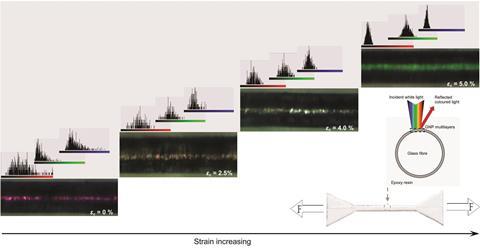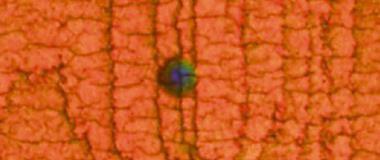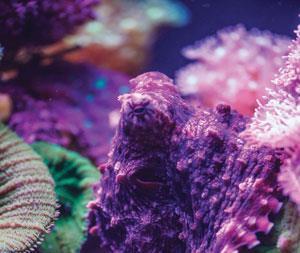A coating inspired by fish scales could highlight structural weakness in buildings and vehicles
Inspired by natural iridescence in fish skin, scientists in Germany have developed a graphene-based coating that changes colour when deformed. It could provide a simple way to warn of hidden damage in buildings, bridges and other structures.
Many materials are coloured by chemical pigments, which absorb light at particular wavelengths and reflect the remaining light, which we see as colour. Other materials, however, are given colour by periodically arranged microscopic surface structures. These cause interference between reflected light waves, amplifying them at specific visible frequencies. This strategy is used in some of nature’s most vibrant materials, from fish scales to peacock feathers, butterfly wings and cephalopod skins.
Inspired by these examples, a team led by Shanglin Gao at the Leibniz Institute of Polymer Research, has developed a structurally coloured coating comprising nanometre-sized graphene flakes. The new material is a kind of traffic light to warn of hidden damage in buildings and vehicles, says Gao, as it changes colour depending on deformation.

Normally, the coating is red; however, when deformed, it appears yellow, and when cracked at the micrometre scale, green. This colour-changing ability comes from a careful initial alignment of the graphene flakes in semi-transparent, parallel layers, coating a glass fibre. Under stress, the layers compress and flatten, changing the interference and colour of reflected light.
‘Structural failure usually starts with tiny cracks and deformations,’ Gao explains. ‘Generally, these microscale cracks are hard to detect.’ Accumulating unseen, they can eventually cause sudden, catastrophic fractures and serious accidents. Coating buildings or even vehicles with Gao’s material, however, could give a clear visual warning of nascent damage.
Michael Bartl, an expert in micro- and nanophotonics from the University of California, Berkeley, US, praises the work. ‘Such materials have enormous potential as non-destructive, integrated sensors for monitoring the health of composites used in buildings, cars and airplanes,’ he says.
Real-world applications, however, will first require much more knowledge about the properties and behaviour of the coating, notes Gao.
References
This article is free to access until 17 May
Y Deng et al, Mater. Horiz., 2017, DOI: 10.1039/C6MH00559D











No comments yet